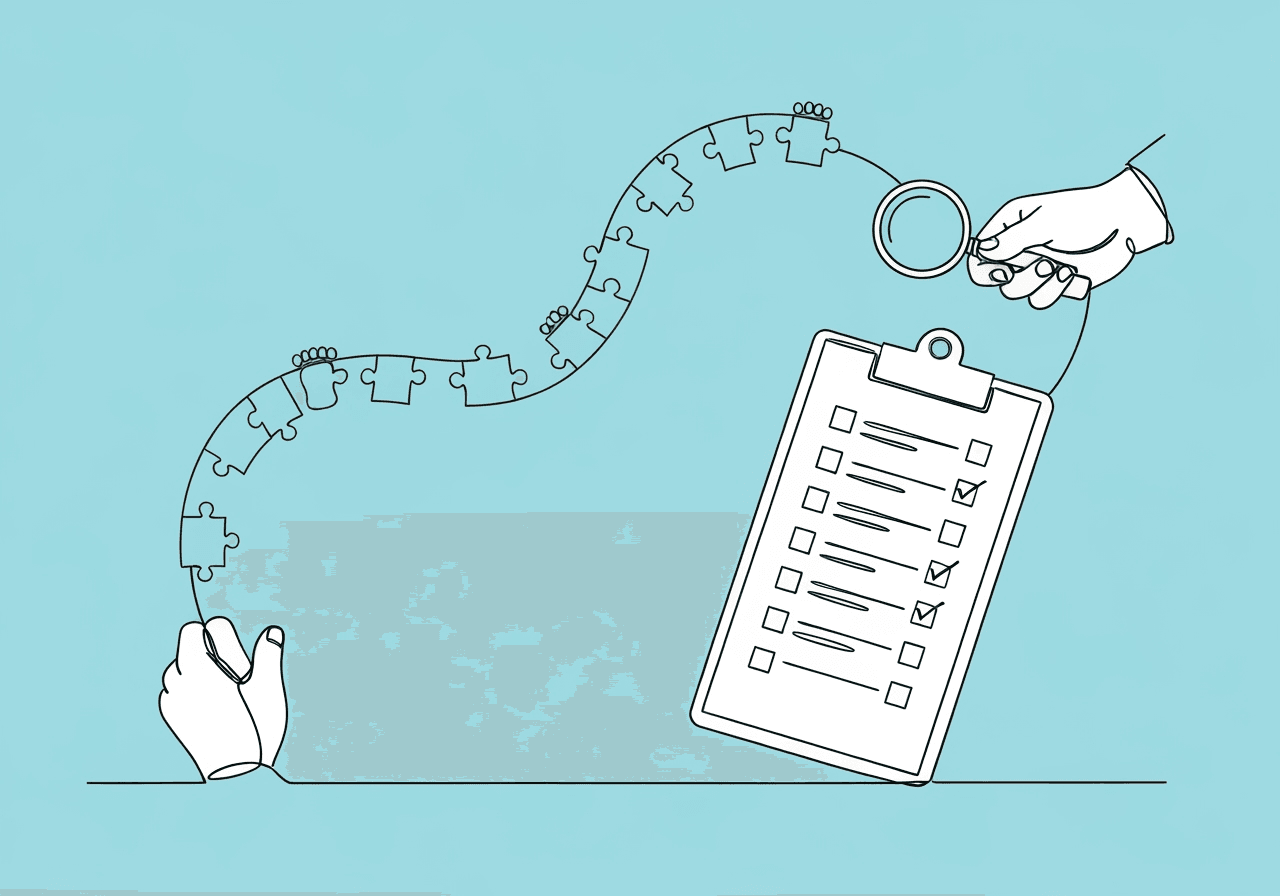BCBA Documentation for Adult Clients: Ethics Checklist

Tackling Challenges in BCBA Documentation for Adult Clients
As a BCBA, you face unique demands when handling BCBA documentation for adult clients, especially in balancing ethics with the needs of adults pursuing ABA services. Precise records support independence in areas like work or community life, while meeting BACB Ethics Code requirements. This guide uses checklists from BACB standards and proven practices to help you optimize your workflow, cut down on mistakes, and focus on client-centered care.
Here are three key takeaways to guide your approach:
- Prioritize capacity checks and assent to respect adult autonomy from the start.
- Align goals with real-life priorities like vocational skills for meaningful progress.
- Maintain ongoing documentation of boundaries and transitions to ensure compliance and smooth handoffs.
You'll get practical checklists for six essential areas, whether managing your own cases or guiding your team. These steps boost adult ABA services compliance and emphasize dignity in evidence-based work.
BCBA Documentation: Informed Consent & Capacity for Adult Clients
You must confirm a client's decision-making ability before starting ABA services for adults, as informed consent forms the base of ethical practice. The BACB Ethics Code (2020) calls for clear explanations of treatments, consent gathering, and full records, including confidentiality boundaries. For adults with possible capacity issues, like intellectual disabilities, assess understanding without presuming limits.
Follow this checklist for strong records:
- Check capacity via direct talks, using plain language on risks, benefits, and options; note findings and any evaluation referrals BACB Ethics Code.
- Get written or verbal consent covering goals, methods, and withdrawal rights; renew it for changes like added treatments.
- When capacity is limited, get LAR consent but seek client assent too; log all talks and efforts to include the client.
- Disclose confidentiality exceptions at the beginning and update them; keep files HIPAA-secure.
- Sign off on forms every quarter or after major shifts to keep them current.
This approach builds trust and meets standards, drawing from key principles on informed consent in ABA Clinical Informed Consent in ABA.
For ethics basics, review our BCBA Ethical Documentation Guide.
BCBA Documentation: Goal Setting Compliance for Adult Clients
Shift adult ABA goals toward independence, like job skills or self-advocacy, away from just rule-following. You can use person-centered planning to match goals to client values and daily needs, with data tracking progress, as the BACB requires. This adapts from child-focused aims to boost autonomy in work and home life.
Use this checklist to document goals properly:
- Run a full functional review, like adapted VB-MAPP for adults, to spot needs such as budgeting; record starting data and client views.
- Create SMART goals, for example, "Prepare a meal alone three times a week in 90 days," tied to adult goals like fitting into the community.
- Work with the client, family, or job supports; note talks and reasons for choices per BACB standards Ethics Code for Behavior Analysts.
- Track data regularly and tweak goals every quarter; show cultural fit and client drive.
- Connect goals to larger results, like less need for help, in reports for payer rules.
These steps promote real impact without excess focus on control, based on assent in ABA practices Assent in Applied Behavior Analysis.
BCBA Documentation: Assent/Dissent for Adult Clients
Adults in ABA hold the right to assent—their willing participation—or to dissent anytime, separate from formal consent. Under BACB Ethics Code (2.11), you document assent where it fits, particularly for cognitive hurdles, and honor pull-outs to value choice. Regular checks stop pressure and uphold respect, as shown in studies on therapeutic assent.
Track assent/dissent with this checklist:
- Note starting assent through words, signs, or actions; describe sessions simply and confirm grasp.
- Watch for assent in every session, logging signs like eagerness or pushback (e.g., looking away); rate it on a basic scale from 1-5.
- Record dissent right away, with your reaction like stopping the activity and next steps; avoid force, following ASAT guidelines What is Assent in ABA.
- Check assent again after plan shifts or discomfort cues; discuss with the client and refresh files.
- Teach RBTs to spot and report it; check logs each month to refine plans.
See our post for more: BCBA Guide to Client Assent.
BCBA Documentation: Guardianship & LAR Files for Adult Clients
When adults have guardians, verify legal papers to allow services, since guardianship handles choices for those with limited capacity. Guardians serve the client's good, but update files often to match state rules and BACB norms. Gaps can halt services or break ethics.
Keep guardianship/LAR files in order with this checklist:
- File the court order, request, and hearing info at start; check it includes health choices for ABA.
- Validate guardian power yearly or on changes; log details, limits, and client role.
- Pair LAR consent with guardianship files; mark if partial setup lets the client join in.
- Keep files safe with logs; check dates and updates, as in Autism Speaks tools Guardianship and Conservatorship Guide.
- Without guardianship, assess capacity and get direct consent; get legal advice on issues.
This supports solid adult client consent documentation for everyone.
BCBA Documentation: Ethical Boundaries for Adult Clients
You must steer clear of dual relationships—mixing pro and personal roles—that harm fairness in adult ABA. BACB Ethics Code (1.11) bans conflicts, like client friendships, to protect well-being; if they happen, log risks and fixes. Adult settings bring special risks, like job overlaps, so stay alert.
Maintain boundaries using this checklist:
- Check for dual risks at intake, such as links through family; reveal and skip if they clash.
- Set rules on gifts, online contact, or extra talks (e.g., gifts under $10 max); put in consent docs.
- Log all boundary events, with supervisor input, via BACB rules Ethics Code for Behavior Analysts.
- For emerging issues, make a fix plan like referring out; watch for damage and end if needed.
- Train team on adult cases, like work sites, with yearly ethics checks.
Explore more in BCBA Ethical Practices Overview.
BCBA Documentation: Transition & Discharge for Adult Clients
Plan transitions early to aid adult independence from ABA, with records from the outset to prevent sudden stops. Tie discharge to goals with fade-outs for right endings, per BHCOE standards BHCOE ABA Excellence Standards. Add referrals for ongoing work or community aid.
Plan transitions with this checklist:
- Set discharge rules (e.g., 80% skill success) and dates in the start plan; check progress twice a year.
- Build a fade plan, noting cut hours and skill spread; teach client or helpers upkeep.
- List aftercare like referrals or aids; cover hurdles and fixes, matching Aetna criteria Aetna ABA Medical Necessity.
- Write a wrap-up report on wins, results, and check dates; get stakeholder signs.
- Store transition files and plan follow-ups, like 30 days after, for tweaks.
Learn details in BCBA Transition Guide.
Frequently Asked Questions
How Do Informed Consent and Assent Differ in Adult ABA Services?
Consent means legal okay from client or LAR; assent is the adult's ongoing choice to join, even with limits. Document both per BACB, with assent easy to drop for choice BACB Ethics Code.
What SMART Goals Fit Adult ABA in Jobs?
Try "Finish job checklist alone for 90% of shifts in six months" or "Start daily chats with two coworkers." They build skills like job prep, made together for fit, via BACB ethics Ethics Code for Behavior Analysts.
How to Handle Assent Pull-Out in Adult Sessions?
Stop the activity at once, honor the no, and log cues and actions. Check interest later without push; adjust as needed. BACB stresses respect, using logs for patterns ASAT Assent Guidelines.
What Verifies Guardianship for Adult ABA Clients?
Get the court order, ensure it covers health, and check yearly with guardian. Log talks securely. For limits, include client, per Autism Speaks Guardianship Toolkit.
How Do BCBAs Avoid Dual Relationships in Adult Settings?
Screen for ties at start and set limits like no personal links. If it happens, share risks, talk to bosses, and log protections per BACB 1.11. End if it clouds judgment BACB Ethics Code.
What Makes an Adult ABA Transition Plan Work?
Cover goal recaps, fades, resources, and training. Link to success measures with follow-ups. BHCOE pushes teamwork for independence in jobs BHCOE Service Standards.
Strong BCBA documentation for adult clients lets you offer ethical ABA that honors choice and drives results. These checklists match BACB rules, cutting risks in areas like consent and shifts. Sources confirm detailed files handle adult issues well.
Start by checking a client file with the consent list, discuss boundaries with your group, and outline a transition sample. Stay current on BACB changes and use tools like Praxis Notes for easy records. This way, you strengthen adult ABA services compliance and client trust.
Popular in Compliance & HIPAA
- 1
BCBA Procedural Fidelity Checklist: Essential H-6 Guide
1,3016 min read - 2
ABA Documentation Checklist: RBT Compliance Guide 2025
1,2969 min read - 3
RBT Renewal Competency Documentation Guide for BCBAs
1,2546 min read - 4
BCBA Service Discontinuation Ethics: BACB Guide
7966 min read - 5
BCBA Ethical Documentation Best Practices
6806 min read
Popular in Compliance & HIPAA
- 1
BCBA Procedural Fidelity Checklist: Essential H-6 Guide
1,3016 min read - 2
ABA Documentation Checklist: RBT Compliance Guide 2025
1,2969 min read - 3
RBT Renewal Competency Documentation Guide for BCBAs
1,2546 min read - 4
BCBA Service Discontinuation Ethics: BACB Guide
7966 min read - 5
BCBA Ethical Documentation Best Practices
6806 min read
Related Resources
Explore more helpful content on similar topics

BCBA Checklist: Documenting a New Behavior Intervention Plan (BIP) for Compliance
Discover the BCBA new BIP documentation checklist for seamless compliance in ABA. Learn essential steps from FBA data linkage to crisis protocols, replacement behaviors, and final audit readiness to elevate your behavioral interventions.

BCBA Treatment Fidelity Documentation: BACB H-6 Essentials
Master BCBA treatment fidelity documentation per BACB H-6 essentials. Discover TF components, audit-proof note-taking, and common pitfalls to ensure ethical ABA compliance and professional integrity.

Essential BCBA Interprofessional Documentation Checklist
Learn essential BCBA interprofessional documentation strategies to ensure BACB Code 3.09 compliance. Collaborate effectively with SLPs and OTs using checklists, tips, and avoid common pitfalls for audit-ready records.